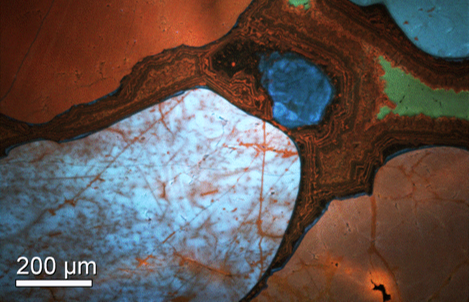Sedimentologists use cathodoluminescence (CL) in clastic and carbonate petrography to reveal textural information that is not apparent with other (imaging) techniques. By studying grain provenance, sediment, and cement growth fabrics, CL studies provide insight to understand the diagenetic history better.

Cementation and diagenesis
Depositional grains and cement in carbonate and quartz minerals form under very different conditions, resulting in clear differences in their trace element chemistry. CL maps reveal the details of the growth fabric zonation, dissolution, and micro-fracturing, including successive cement generations.
In sandstone, detrital (of various origins) and authigenic quartz overgrowths enable quantification of cement abundance and determination of porosity-loss processes.
Provenance
CL is a valuable technique for monitoring the provenance of feldspars, mudrocks, and quartz (plutonic, volcanic, hydrothermal, and metamorphic). Specifically, maps can detect changes in crystal texture that correlate with impurity distributions and concentrations approaching parts per million levels.
References
Götze, J. M.; Plötze, M.; HaberMann, D., Mineral Petrol 71 (2001) p225 – 250
Scholonel, C.; Augustsson, C., Sedimentary Geology 336, 1 May 2016, p36 – 45
Color cathodoluminescence images captured using a ChromaCL2™ detector and provided courtesy of Prof. J Schieber, Indiana University Shale Research Lab.